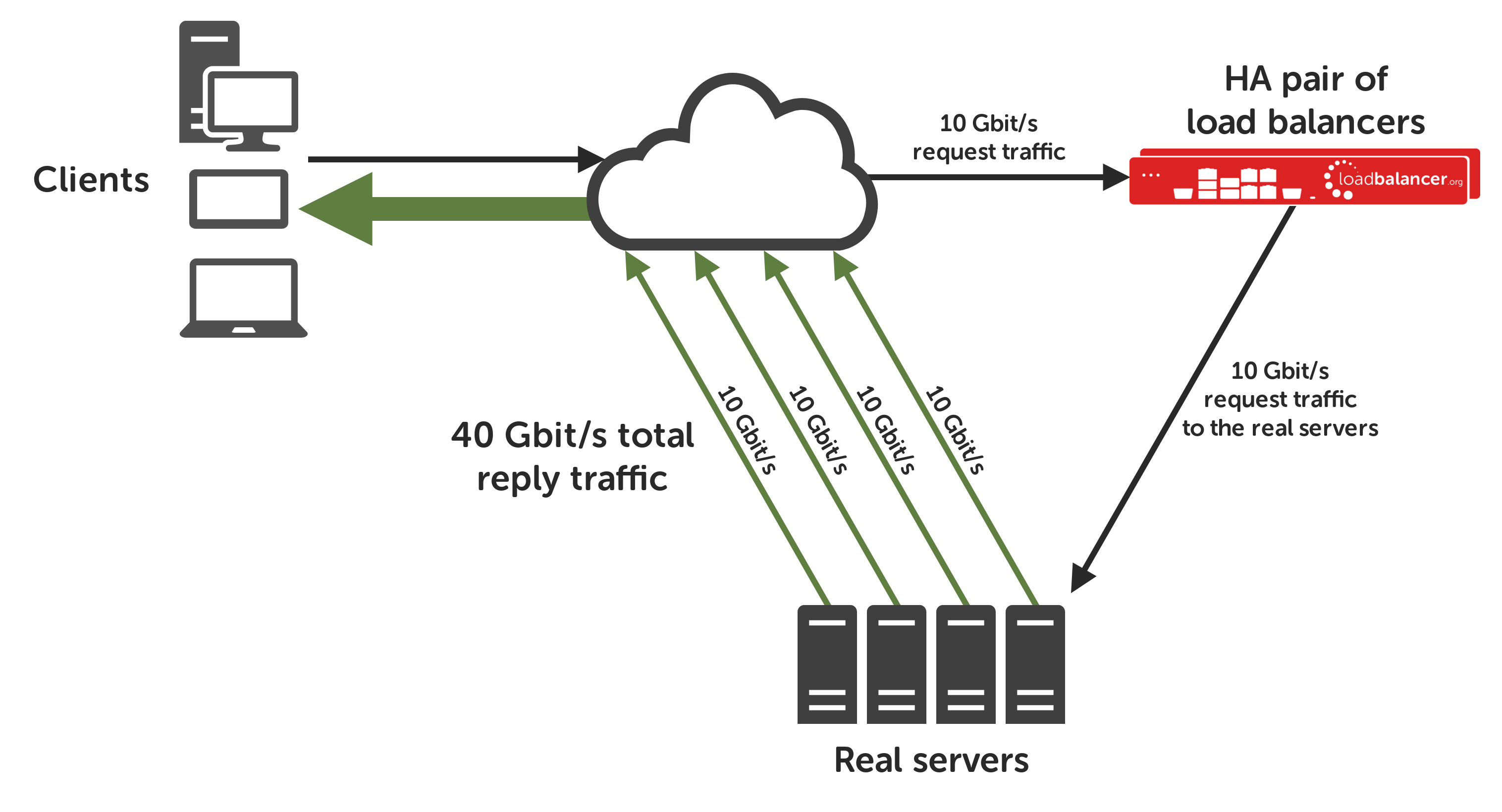
Some relationships fizzle out over time. You know how it goes - you change, you start fighting, you grow apart. But fifteen years on, Loadbalancer.org’s love affair with Layer 4 DR mode is still going strong.

For the uninitiated, Direct Server Return (DSR/DR/N-Path) is a clever trick which entails directly routing packets to the chosen real server. This is achieved by changing the destination MAC address on the fly for maximum speed when load balancing inbound traffic. Reply traffic then flows from the servers straight back to the clients, which means that the load balancer is bypassed on the return journey. This maximizes the throughput of return traffic allowing near endless scalability.
The technology behind DR mode was originally developed by IBM in the late 1990s. It was used to serve the HTTP traffic for the Olympic Games in Atlanta 1996 and Sydney 2000. It also powered the Deep Blue versus Garry Kasparov chess matches, and the Wimbledon tennis championship website in 1998.
So you could say it’s come in useful!
The underlying technology, which is the open-source LVS project (something we've loved contributing to over the past 15 years!), is very mature, and is an established way of load balancing lots of things. Because of how DR mode works, it’s extremely fast, unbreakable, and implementing it requires minimal change to existing infrastructure.
Yet DSR sometimes gets a bit of a bad rap from other vendors. Why is that? Well, it could be something to do with the fact that other load balancing methods are more complicated - and once you’ve been sold a pricier solution, you’re locked in.
We’re the DR mode specialists, and we have been since the beginning. It’s part of what sets us apart from other vendors. We’ve always known that DSR just works, and it’s endlessly scalable. In our first five years as a company, this gave us great traction with web filter and video hosting vendors due to their need for speed and transparency.
DR mode is an ideal load balancing method for scenarios like these, where request traffic is small in size while reply traffic is very large. It’s a great fit for medical imaging applications, an area where we’re now particularly strong.
How to use DR mode to get 40Gbit/s+ from a 10Gbit/s medical imaging system:

Still simply the best
Over time, CPUs have become faster and layer 7 load balancing software has matured, and as a result layer 7 load balancing at 40Gbit/s is now a realistic option. Over the past five years we’ve started recommending Layer 7 as default - in part because it’s what people expect!
There are some scenarios where DR mode can’t currently be used - for example, in the AWS or Azure cloud platforms, due to limitations in these environments. But fifteen years down the line, we still love DSR and recommend it to customers for its unbeatable performance, simplicity and consistency.
2020 update
Follow the link to read our follow-up blog, Layer 4 vs Layer 7 load balancing - we still love DSR, but…, or watch the video below:
